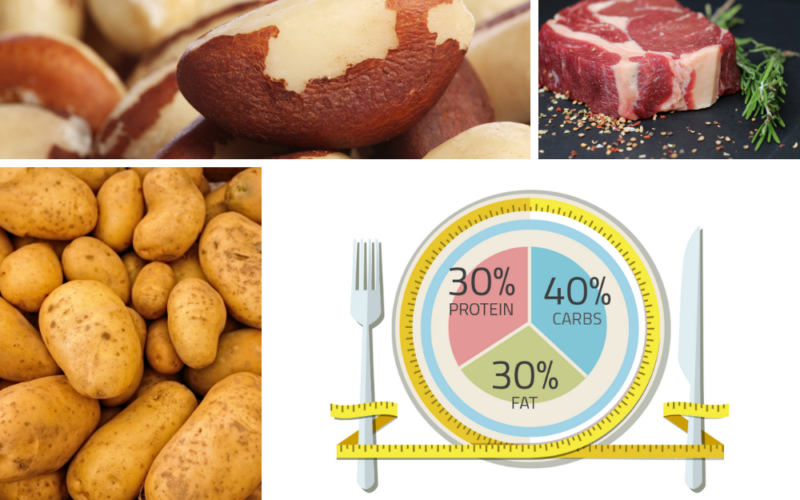The Zone Diet was developed by Dr. Barry Sears, an American biochemist, about 30 years ago. His book The Zone, which was a bestseller, was published in 1995.
The Zone Diet claims to reduce the inflammation in your body. Dr. Sears put forward the theory that inflammation was the reason people gain weight, become sick, and age faster. In this article, we have listed everything you need to know about the zone diet.
Table of Contents
What is the Zone Diet?
Excess cellular inflammation in our bodies can cause weight gain, chronic diseases, and disruption of physical and mental well-being. The Zone can be considered as the physiological state in which hormonal balance is achieved to support a healthy inflammatory response.
According to Dr. Barry Sears, the most important factor for weight loss was proper hormonal balance and stable blood sugar levels. Increased levels of insulin help to control blood sugar while other hormones promote inflammation which leads to weight gain.
Dr. Barry Sears believes that this is the major cause of obesity in people today. The body can burn fat more efficiently by regulating the blood sugar level and keeping insulin levels under control. Hence, the zone diet aims at controlling high levels of hormones in the body and maintaining them in the right zone, neither too low nor too high.
Thus, the concept of the zone diet is to regulate levels of insulin and other hormones so that they are neither too high nor too low. This can be achieved by maintaining a perfect balance of carbohydrates, fats, and protein. This balance can be achieved by the intake of a diet with high protein, low carbohydrates, and moderate fat consumption. The right balance of nutrients is needed by our bodies to stay healthy, slim and fit.
The right balance of protein, fats, and carbohydrates in the diet controls the three essential hormones namely insulin, glucagon, and eicosanoids.
Insulin is a storage hormone. It is important to regulate levels of insulin in our bodies as it can increase inflammation and make us fat.
Glucagon is a mobilization hormone that sends signals to our body to release stored carbohydrates at a steady rate. This leads to stabilized blood sugar levels.
Eicosanoids hormones control inflammation in our bodies. They can be considered as the main hormones which control many other hormones in the body.
How the Zone Diet Works
The Zone Diet requires that you simply balance your plate at every meal and snack with these nutrients. The Zone Diet is one in which you have to eat in a specific ratio, that is, 30% fat, 30% protein, and 40% carbohydrates.
- Protein: 1/3rd of your plate, add some lean protein, about the size and thickness of your palm. This could include egg whites, fish, poultry, lean beef, or low-fat dairy.
- Carbohydrates: 2/3rds of your plate, add a lot of colorful vegetables and a little fruit. Fruits and vegetables to avoid are those that are high in sugar (e.g., bananas, raisins) or starchy (e.g., potatoes, corn).
- Fat: Add a little bit of monounsaturated fat. This could include olive oil, avocado, or almonds.
Zone Diet List of Foods
1. Protein
Each snack and meal should have a portion of protein in it. You should eat a combination of low-fat protein such as chicken, nuts, turkey, and fish. The recommended amount of each serving of protein is around 4 ounces for men and 3 ounces for women.
2. Carbohydrates
The carbohydrate portion of the meal or snack should be about two times the protein portion. Carbohydrates sources include vegetables, beans, whole grains, and fruits.
3. Fat
Meals and snacks in this diet should include small amounts of fats too. These fats should be good fats that can be found in foods such as olive oil, nuts, and avocados.
The zone diet does not completely stop the consumption of any food, but certain foods should be avoided. These include fruits high in carbs and sugar such as raisins, corn, banana, and carrots.
These foods are included in the “unfavorable list” in the Zone diet plan. Fatty red meat and egg yolk are placed in the “bad fats” list. Refined grain products like pasta, bread, tortilla, and starches should be used as condiments rather than the main or side dish in the meal.
Zone Diet Plan
Moreover, the diet also suggests that we should eat five times a day, that is, three meals and two snacks. Ideally, each should have nutrients in the specific ratio mentioned above. There also some requirements for each nutrient group that is consumed.
The carbohydrates should have a low glycemic index, that is, they should slowly release sugar into the bloodstream to keep you fuller for a longer time. The protein consumed should be lean and the fat should be mostly monosaturated. Below are some basic rules for the zone diet:
- You need to eat breakfast within one hour of waking up
- The maximum gap between meals can be 5 hours
- You need to have a snack before going to bed at night
- You should have a meal within 2-2.5 hours of snacking
- You need to drink 8 ounces of water every day
- You need to try and assess your level of hunger before every meal or snack
- You should start your meals with low fat and protein food. Then have some carbs which have a low glycemic index such as fruits.
Zone Diet Pros and Cons
Advantages of the Zone Diet
- The zone diet has fewer restrictions in terms of food choices when compared to other diets such as the low carb diet. Though it does list some foods as unfavorable.
- The diet’s recommendations are also generally healthy for our diets. It recommends eating more fruits and vegetables, and monosaturated fatty acids which are also healthy for the heart. Moreover, the zone diet recommends giving up processed and junk food such as chips and biscuits from your diet.
Disadvantages of the Zone Diet
- Firstly, the concept of the zone diet is based mainly on theories and lacks the backing of evidence from proper studies.
- Secondly, it can be quite complicated and time-consuming to follow properly. It’s not easy to prepare five meals every day and that too in a specific ratio.
- Moreover, you may need to invest in a Zone diet book and a set of measuring spoons and scales. All this can feel like tasks or chores and may prevent you from actually enjoying your meals. You could buy prepackaged zone foods, but they are quite expensive.
- Another disadvantage is that the zone diet recommends removing foods such as wholegrain cereals and cheese from your diet. These foods are quite healthy as they contain fiber, vitamins, and other important nutrients.
Tips for Effective Zone Diet
Want to have an even stronger connection to the Zone?
- Make your own meals – When cooking, consult the Zone Food Block Guide, or access hundreds of Zone Recipes.
- Determine how much protein you need to maintain your muscle mass – use our Body Fat Calculator. Then spread the recommended amount of protein you need throughout the day, balancing it with the correct amount of colorful carbohydrates.
- Use an insulin resistance quiz – to determine your extent of insulin resistance, and receive clinically-based dietary recommendations that may help reduce your levels of insulin resistance.
Losing weight, generally and by following the zone diet, is not easy and requires a lot of effort. At the end of the day, you need to assess whether following the zone diet is the correct option for you.





